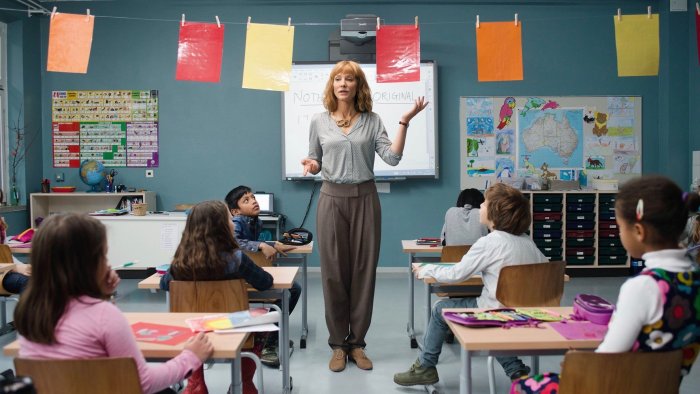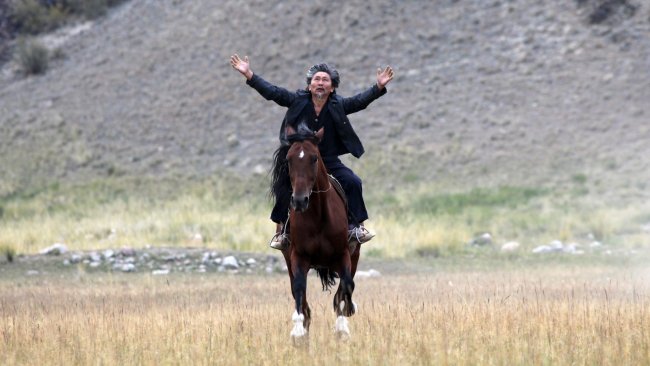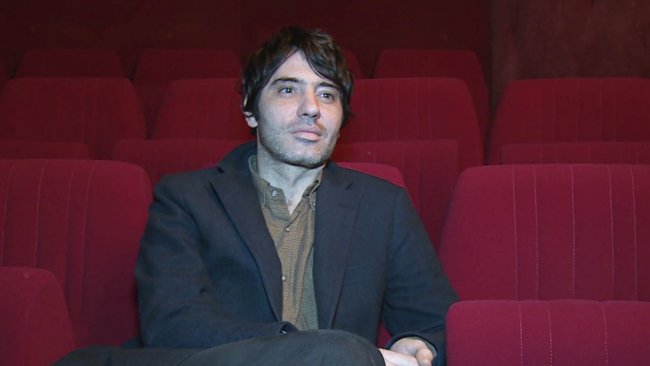Manifesto
[…] It is a sort of Gesamtkunstwerk trying to survey the last two centuries of Western civilization. In this sense, the film shares the attitude of many collections and museums: the aspiration to create a theatrum mundi.
[…] Julian Rosefeldt’s last work would probably be better understood in the multi-channel installation, but its linear theatrical version offers a perfectly nostalgic, delirious, and exciting experience of the Western hemisphere’s recent history and it also serves as a hommage to cinema.
Text: Giuseppe Di Salvatore

Manifesto is a collage of 60 manifestos, from Karl Marx to Jim Jarmusch, all of which are summed up in 12 texts and 12 filmic tableaux. Julian Rosefeldt’s film is a study and a synthesis of revolutions, revolutions of words, revolutions in the epoch of journalism. Through this synthetic conception, he is able to lead a metadiscourse essentially focused on the avantgards and the avantgardist attitude. The result is the photography of an epoch in which the intellectually loaded intentions and programs take precedence over their realization, because of the force and violence of modern pionerism. Thus, we are given the occasion to see just how different this ideologic attitude is with respect to the “liquid” approach of our age where, more than words, an ephemeral spectacularism dominates.
This impression of obsolescence that we get from a world of absolute positions and superlatives is especially strong as the manifestos in the film are staged through 12 contemporary scenes, each of which portrays a particular profession or a precise social state. During the screening at the cinema Arthouse Piccadilly in Zurich, organized by the Hauser & Wirth Gallery, it is practically impossible to follow the details of each discourse and all of the implied connections made in each scene. Rosefeldt builds an intricate net of references, in which the particular choice of scenes and professions comments on the content of the manifestos presented. The original 12-channel installation in an exhibition space would have probably given the spectator more time to easily comprehend the whole project. The “theatrical” linear version we viewed places the focus more on the typification of the various roles, all played by the chamaleon-like actress Cate Blanchett, and on the almost caricatural figures she wonderfully impersonates. The common trait shared by all of the characters (among others: a widow, a searcher, a punk, a gallerist, a puppet-maker, a choreographer, a school teacher) is the paternalist didacticism of her preaching stance.
Cate Blanchett’s “one woman show” and its ambition of embracing all cultures, professions, social layers, ideologies, and politics makes Manifesto a perfectly global product or, better, a product speaking about globalism or totalitarianism. It is a sort of Gesamtkunstwerk trying to survey the last two centuries of Western civilization. In this sense, the film shares the attitude of many collections and museums: the aspiration to create a theatrum mundi. If we recall Gilles Deleuze’s redefinition of “delirium” as an attitude specifically orientated towards the world as a whole, Manifesto is nothing more than a delirium itself; not only in its content, but in its form as well. We should speak of a filmic delirium, for the filmic aspects of Manifesto follow the same all-encompassing attitude: Rosefeldt dares to push the image layer up to today’s most advanced technological levels, and we are thus able to enjoy the splendid photography, including incredibly high-definition slow motion sequences. Regularly, the constant slow camera movement gives us the typical impression of a panoramic objectivity.
Julian Rosefeldt’s last work would probably be better understood in the multi-channel installation, but its linear theatrical version offers a perfectly nostalgic, delirious, and exciting experience of the Western hemisphere’s recent history and it also serves as a hommage to cinema. The “film manifesto” meaningfully concludes the series and is explicitly didactic, as it is shot in a primary school classroom and aimed at the next generation. Indeed, a lot can be learned by watching Rosefeldt’s Manifesto, about Western history and values, but there is also a lot to enjoy, in the images and the pleasure of taking part in this contemporary theatrum mundi.
This article contains a third-party video. If you would like to watch the video, please adjust your settings.
Info
Manifesto | Film | Julian Rosefeldt | DE 2015 | 130’
More Info on the Manifesto project
First published: April 17, 2017



